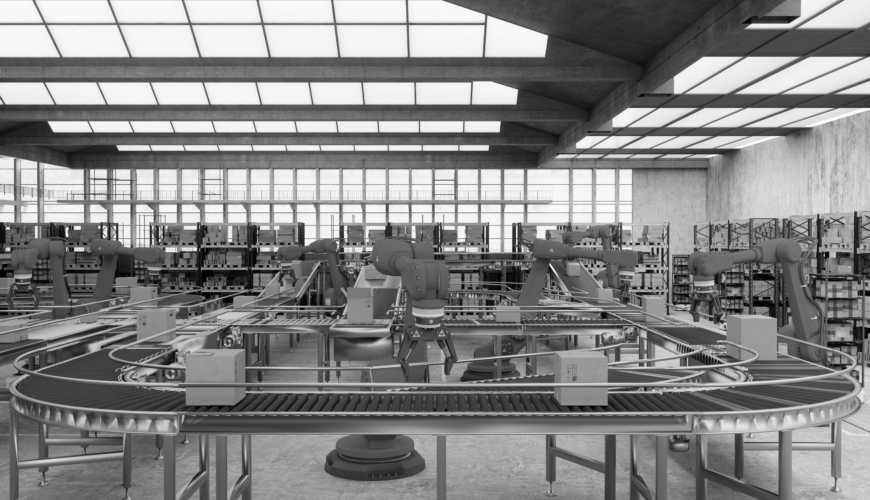The financial viability of warehouse automation is often obscured by the glitz and glamour of new technologies; but when does it actually pay to automate your warehouse operations? In the dynamic landscape of modern business operations, the quest for efficiency, cost reduction, and enhanced productivity is an ever-present pursuit. Warehouse automation, with its promise of streamlined processes, reduced labor costs, and improved accuracy, has emerged as a solution that holds the potential to reshape the way companies manage their supply chain and distribution operations. However, the question remains: Does it truly pay to automate? In this article, we explore the world of warehouse automation, dissecting the factors that influence its financial viability, exploring the benefits and challenges, and ultimately answering the crucial question of whether an investment in automation yields a positive return.
The Landscape of Warehouse Automation
Warehouse automation entails the integration of cutting-edge technologies to perform tasks that were traditionally executed by human hands. From conveyor systems that transport goods seamlessly to robotic arms that pick, pack, and sort with precision, the realm of automation offers a tantalizing vision of an optimized, error-free operational environment. At its core, warehouse automation promises several key benefits:
- Labor Cost Reduction: The most immediate allure of automation lies in its potential to drastically reduce labor costs. With machines taking over labor-intensive tasks, businesses can trim operational expenses while reallocating human resources to more strategic roles.
- Enhanced Efficiency: Automation introduces a new level of efficiency to warehouse operations. Machines work tirelessly around the clock, executing tasks with consistency and speed, ultimately leading to higher throughput rates and swifter order fulfillment.
- Error Mitigation: The realm of human error is inescapable, especially in repetitive tasks. Automation, however, minimizes the risk of errors in processes like order fulfillment and inventory management, translating to fewer costly mistakes and higher customer satisfaction.
- Optimized Space Utilization: The strategic deployment of automation can optimize warehouse layouts, effectively utilizing available space. This optimization can alleviate the need for costly facility expansions, resulting in potential cost savings.
- Continuous Operation: Automation systems defy the constraints of shifts and breaks, operating 24/7 without fatigue. This aspect ensures the continuous flow of goods, contributing to timely order processing and swift customer deliveries.
The Calculus of the Payback Period
While the promises of warehouse automation are tantalizing, the decision to automate involves a complex financial calculus. Central to this calculation is the concept of the payback period, the time it takes for the investment in automation to yield returns that offset the initial costs. Several pivotal factors influence the payback period and the financial viability of warehouse automation:
- Initial Investment: The upfront expenditure required for automation technology is a considerable factor. The costs encompass the procurement of technology, installation, and integration with existing systems. This financial outlay sets the stage for evaluating payback.
- Operational Scale: The magnitude of the warehouse operation plays a pivotal role in determining the financial viability of warehouse automation. Large-scale operations realize more substantial benefits due to the sheer volume of automated tasks.
- Labor Costs: The significance of labor costs in the overall operational expenses cannot be overstated. If labor constitutes a significant portion of these expenses, the impact of automation in reducing labor requirements can expedite the payback period.
- Process Complexity: The intricacy of the tasks being automated influences the payback period. Complex processes may demand sophisticated automation technologies and extended integration times, potentially prolonging the time required to recoup the investment.
- Technology Lifespan: The lifespan of automation technology is another consideration. If the technology requires frequent maintenance, upgrades, or replacement, it can influence both the payback period and the ultimate return on investment.
- Integration Challenges: Integrating new automation technologies into existing systems can be intricate and time-consuming. The effort required for seamless integration can impact the payback timeline.
- Market Demand: The market’s demand for rapid and precise order fulfillment significantly shapes the decision to automate. Automation can translate to elevated customer satisfaction and, potentially, increased revenue if customers are willing to pay a premium for swift service.
- Cost of Facilities and Land: Often intertwined with warehouse automation is the cost of facilities and land. High land/facility cost locations support the mechanization/automation equation.
The financial viability of warehouse automation depends on many factors…
Whether it pays to automate isn’t a straightforward question but rather a nuanced exploration of factors, benefits, and costs. With its potential to revolutionize operations, warehouse automation is a strategic decision that requires careful consideration of financial realities. Through the lens of the payback period, businesses can gauge the financial viability of warehouse automation investments while assessing factors like operational scale, labor costs, and technology lifespan.
Automation, when implemented wisely, holds the potential to redefine operational excellence. However, a holistic understanding of automation’s financial dynamics is essential for organizations to make informed decisions that align with their goals and resources. With the right blend of calculated investment and calculated gains, businesses can navigate the transformative journey of warehouse automation, paving the way for a more efficient, cost-effective, and technologically advanced future.


